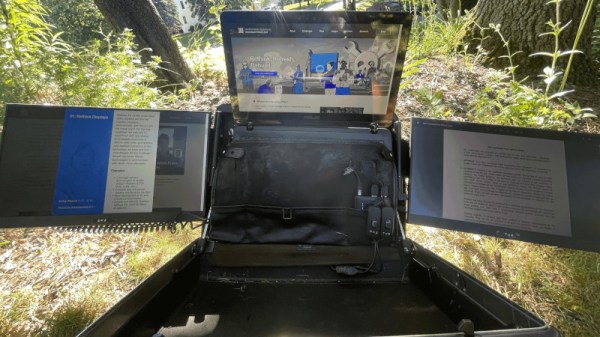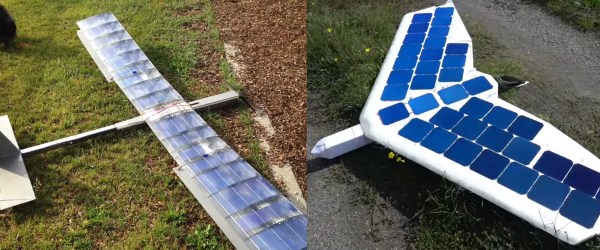Many of us have projects that end up spanning multiple years and multiple iterations, and gets revisited every time inspiration strikes and you’ve forgotten just how much work and frustration the previous round was. For [Daniel Riley] AKA [rctestflight] that project is a solar powered RC plane which to date spans 4 years, 4 versions and 13 videos. It is a treasure trove of information collected through hard experience, covering carbon fibre construction techniques, solar power management and the challenges of testing in the real world, among others.
Solar Plane V1 had a 9.5 ft / 2.9 m carbon fibre skeleton wing, covered with transparent film, with the fragile monocrystaline solar cells mounted inside the wing. V1 experienced multiple crashes which shattered all the solar cells, until [Daniel] discovered that the wing flexed under aileron input. It also did not have any form of solar charge control. V2 added a second wing spar to a slightly longer 9.83 ft / 3 m wing, which allowed for more solar cells.
Solar Plane V3 was upgraded to use a single hexagonal spar to save weight while still keeping stiff, and the solar cells were more durable and efficient. [Daniel] did a lot of testing to find an optimal solar charging set-up and found that using the solar array to charge the batteries directly in a well-balanced system actually works equally well or better than an MPPT charge controller.
V4 is a departure from the complicated carbon fibre design, and uses a simple foam board flying wing with a stepped KF airfoil instead. The craft is much smaller with only a 6 ft / 1.83 m wingspan. It performed exceptionally well, keeping the battery fully charged during the entire flight, which unfortunately ended in a crash after adjusting the autopilot. [Daniel] suspects the main reasons for the improved performance are higher quality solar panels and the fact that there is no longer film covering the cells.
We look forward to seeing where this project goes! Check out Solar Plane V4 after the break.
Continue reading “Soaring With The Sun: 4 Years Of Solar RC Planes” →


















